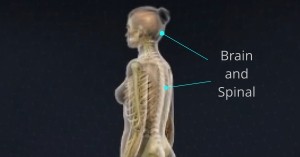Hemangioblastoma Newport Beach & Orange County, CA
Hemangioblastoma Treatment in Orange County
 Hemangioblastoma is a benign or non-cancerous and highly vascular tumor that commonly occurs in the central nervous system, such as the brain and spinal cord. As hemangioblastoma grows, it presses on the brain and can cause numerous symptoms. It is sometimes discovered incidentally during an evaluation for unrelated symptoms or another disorder. Most hemangiomas occur as lesions and most brain lesions occur within the inferior back portion of the brain, known as the cerebellum which is especially important for balance and coordination.
Hemangioblastoma is a benign or non-cancerous and highly vascular tumor that commonly occurs in the central nervous system, such as the brain and spinal cord. As hemangioblastoma grows, it presses on the brain and can cause numerous symptoms. It is sometimes discovered incidentally during an evaluation for unrelated symptoms or another disorder. Most hemangiomas occur as lesions and most brain lesions occur within the inferior back portion of the brain, known as the cerebellum which is especially important for balance and coordination.
Hemangioblastomas occur in two basic forms:
Solid- Tumors consist entirely of tumor cells.
Cystic- Composed of a generally small solid component, often adjacent to a larger cystic portion of a tumor.
Robert Louis, MD, a fellowship-trained Orange County Neurosurgeon, is the Director of the Skull Base and Pituitary Tumor Program at Hoag Memorial Hospital in Orange County, California. Dr. Louis has particular expertise in the endoscopic and minimally invasive treatment of benign and malignant brain tumors, sellar and parasellar tumors, and skull base tumors.
Dr. Robert Louis specializes in minimally invasive brain surgery for the treatment of hemangioblastoma. For appointments, please call (949) 383-4185 or Contact Us.
















